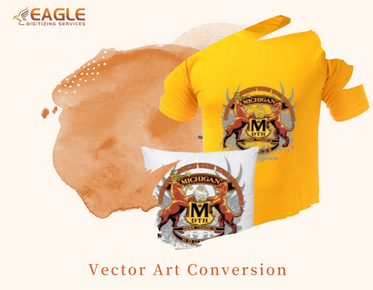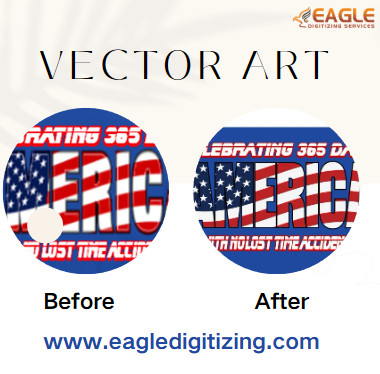Can I Use Stock Vector Art for Products? Here’s the Scoop
Stock vector art has become a valuable resource for designers and illustrators. These pre-made, scalable graphics can be used in a variety of creative projects, providing flexibility and efficiency. As the digital age continues to advance, the use of stock vector art in illustration books and other products is on the rise, offering endless possibilities for enhancing your work.
The Rise of Digital Illustrations
The digital era has revolutionized the way we create and share art. Illustration books and product designs now often incorporate digital elements to achieve professional and polished results. Stock vector art plays a crucial role in this transformation, enabling artists to create intricate and detailed designs without starting from scratch.
What is Stock Vector Art?
Definition and Types of Stock Vector Art
Stock vector art refers to pre-created images that are made using vector graphic software. Vectors, unlike raster images, are made up of pathways and may be scaled infinitely without losing quality. There are various types of stock vector art, including icons, illustrations, patterns, and backgrounds.
Common Uses of Stock Vector Art
Stock vector art is versatile and can be used in numerous ways. It's commonly used in website design, marketing materials, product packaging, and, of course, illustration books. Its adaptability makes it an invaluable tool for both amateur and professional designers.
Advantages of Using Stock Vector Art
Time-Saving Benefits
One of the primary advantages of using stock vector art is the time it saves. Instead of creating every element from scratch, designers can leverage existing vectors to quickly build their projects. This efficiency is particularly beneficial when working on tight deadlines.
Cost-Effectiveness
Stock vector art is often more affordable than commissioning custom illustrations. Many websites offer high-quality vectors at reasonable prices, and some even provide free resources. This cost-effectiveness allows designers to allocate their budgets more effectively.
Versatility in Design
The versatility of stock vector art is another significant benefit. Vectors can be easily modified, resized, and customized to fit the specific needs of a project. This adaptability ensures that designers can maintain a consistent and cohesive aesthetic across their work.
Legal Considerations
Understanding Licensing Terms
When using stock vector art, it's crucial to understand the licensing terms. Different licenses grant different rights, and it's essential to ensure that you comply with the terms of use. This knowledge protects you from legal issues and ensures ethical use of the art.
Commercial Use vs. Personal Use
Licensing terms typically differentiate between commercial and personal use. Commercial use involves using the art in products that will be sold or for promotional purposes, while personal use is limited to non-commercial projects. Make sure to choose the appropriate license based on your project's intent.
Avoiding Copyright Infringement
To avoid copyright infringement, always respect the licensing agreements and give credit to the original artists if required. Using stock vector art responsibly not only protects you legally but also supports the creative community.
Types of Licenses
Royalty-Free Licenses
Royalty-free licenses allow you to use the stock vector art without paying royalties for each use. Once you purchase the license, you can use the art multiple times under the terms specified. This type of license is ideal for designers who need flexibility.
Rights-Managed Licenses
Rights-managed licenses are more restrictive and typically limit the use of vector art to specific projects, periods, or geographic areas. These licenses are often used for exclusive or high-value projects where control over the usage is essential.
Extended Licenses: What You Need to Know
Extended licenses provide additional rights beyond standard royalty-free licenses, such as allowing for higher print runs or use in products for resale. These licenses are essential for large-scale projects and ensure that all legal aspects are covered.
Finding Quality Stock Vector Art
Top Websites for Stock Vector Art
There are many websites where you can find high-quality stock vector art. Popular platforms include Shutterstock, Adobe Stock, Freepik, and Vecteezy. These sites offer extensive libraries of vectors to suit various design needs.
Evaluating the Quality of Vector Art
When choosing stock vector art, evaluate the quality by examining the detail, scalability, and compatibility with your design software. High-quality vectors will have smooth paths, consistent styles, and no pixelation when scaled.
Incorporating Stock Vector Art into Your Work
Integrating Vector Art into Illustration Books
Stock vector art can enhance illustration books by adding detailed elements and backgrounds. Use vectors to complement your original illustrations, ensuring they blend seamlessly into the overall design.
Using Vector Art in Product Design
In product design, vectors can be used for packaging, labels, and promotional materials. Their scalability ensures that your designs look sharp and professional, regardless of the size.
Customization and Editing
Modifying Stock Vector Art for Your Needs
Customize stock vector art to better fit your project's needs. Adjust colors, shapes, and sizes using vector editing software like Adobe Illustrator or Inkscape. These modifications help maintain a unique style while benefiting from the ready-made elements.
Tools and Software for Editing Vector Art
Popular tools for editing vector art include Adobe Illustrator, CorelDRAW, and Inkscape. These programs offer robust features for modifying and personalizing vector graphics, making them indispensable for designers.
Combining Multiple Vector Elements
Creating Cohesive Designs with Multiple Vectors
Combine multiple vector elements to create cohesive designs. Use layering techniques and consistent color schemes to ensure that different vectors work harmoniously together.
Layering Techniques for a Professional Look
Layering adds depth and complexity to your designs. Use layers to organize different elements and create a polished, professional look. To obtain the desired appearance, adjust the opacity and blending modes accordingly.
Balancing Originality and Stock Art
Maintaining Your Unique Style
While stock vector art is a valuable resource, it’s essential to maintain your unique style. Use stock elements as a foundation, but add your creative touch to ensure your work stands out.
Using Stock Art as a Complementary Element
Treat stock art as a complementary element rather than the centerpiece. Use it to enhance and support your original illustrations, creating a balanced and distinctive final product.
Creating Consistent Themes
Developing a Thematic Approach
Develop a thematic approach to your projects by using stock vector art that aligns with your overall vision. Consistency in style and color creates a unified and professional appearance.
Using Stock Art to Enhance Visual Consistency
Stock vector art can enhance visual consistency across different mediums. Whether for print or digital, consistent use of vectors ensures that your brand or project maintains a cohesive look.
Enhancing Your Projects
Adding Depth and Detail with Vector Art
Vector art adds depth and detail that elevate your projects. Intricate patterns, textures, and elements can transform simple designs into sophisticated works of art.
Blending Stock Art with Original Illustrations
Blend stock art with your original illustrations to create unique compositions. Use vector elements to fill in backgrounds, add accents, or introduce new styles, enhancing the overall impact of your work.
Practical Tips for Using Stock Vector Art
Optimizing File Sizes
Optimize file sizes by removing unnecessary elements and simplifying paths. Smaller file sizes improve performance, especially for digital projects.
Ensuring High-Resolution Outputs
Ensure high-resolution outputs by exporting your designs in the appropriate format. Vector files like SVG and EPS maintain quality at any size, making them ideal for both web and print.
Common Mistakes to Avoid
Overusing Stock Art
Avoid overusing stock art, which can make your projects look generic. Balance stock elements with original content to keep your work unique and engaging.
Ignoring Licensing Restrictions
Don’t ignore licensing restrictions. Always adhere to the terms of use to avoid legal issues and ensure ethical practices.
Ethical Considerations
Giving Credit to Original Artists
When required, give credit to the original artists of the stock vector art. Acknowledging their work is not only ethical but also fosters a supportive creative community.
Promoting Transparency in Your Work
Promote transparency by being open about the use of stock art. This honesty builds trust with your audience and showcases your integrity as a designer.
Marketing Your Projects
Showcasing Your Work on Social Media
Use social media to showcase your projects. Share behind-the-scenes looks at your design process and highlight how stock vector art enhances your work.
Creating Mockups and Promotional Materials
Create mockups and promotional materials to market your projects. High-quality presentations help attract clients and showcase the potential of your designs.
Feedback and Iteration
Gathering Feedback on Your Designs
Gather feedback on your designs from peers and clients. Constructive criticism helps you improve and refine your work, ensuring the best possible outcome.
Iterating Based on User Input
Iterate based on user input to enhance your designs. Continuous improvement and adaptation are key to staying relevant and meeting your audience’s needs.
Long-Term Considerations
Building a Sustainable Design Practice
Build a sustainable design practice by balancing the use of stock art with original creations. This approach ensures long-term success and innovation in your work.
Investing in Custom Vector Art
Consider investing in custom vector art for unique and exclusive designs. Custom art adds a personal touch that stock vectors cannot replicate, providing a competitive edge.
Balancing stock art with original illustrations is essential for creating impactful and unique designs. While stock vector art offers convenience and cost-efficiency, integrating it thoughtfully with custom elements ensures your work retains a distinctive and personal touch. The goal is to use stock vectors as a foundation or enhancement rather than the sole focus of your project. Here are Some Significant Pointers You Should Bear in Mind Regarding vector artwork service!
Embrace the opportunities that stock vector art provides while continuing to explore and innovate. Experiment with combining various vectors, customize them to fit your vision, and push the boundaries of creativity. By integrating stock art wisely and maintaining your creative integrity, you can produce exceptional illustration books and products that stand out in a crowded market.



